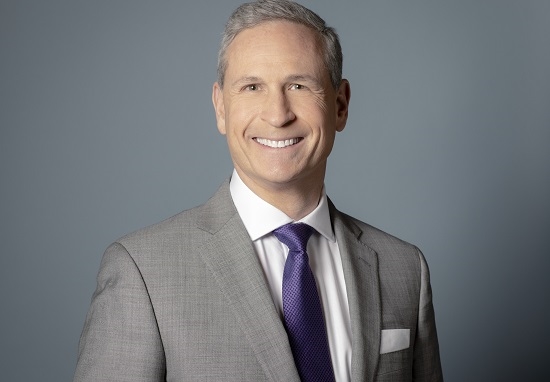Part One: LME chief Chamberlain considers life after nickel closure
Matthew Chamberlian has achieved a lot since taking over as chief executive officer of the London Metal Exchange in early 2017.
In his nearly seven years in charge, Chamberlain has overhauled the LME warehousing system, changed the exchange’s price methodology and launched various sustainability initiatives.
But his leadership will be remembered for one thing: the sudden closure of the LME nickel market in March 2022.
Speaking in September 2023, Chamberlain describes his time running the London market as comprising two distinct chapters either side of the start of the COVID pandemic.
“If you look at my tenure it has been divided into periods that have been marked by external events. Between 2017 and 2020 we were in a process of resetting the business and putting in place the strategic pathway, then obviously we went into the pandemic and I very much enjoyed being able to work so closely with the members to put in place electronic pricing.”
Chamberlain surprised some by announcing in January 2022 he was leaving the LME after a decade with the firm, five as chief executive, to become chief executive of a digital asset custodian backed by Nomura.
He says: “That was an unprecedented period, and I was looking at taking the opportunity after five years to widen my own horizons and take up a new challenge.”
Then the Russian invasion of Ukraine in February 2022 shocked the global commodity markets. Early on March 8, the LME nickel price blew out in the Asian trading session, inflating margin calls, and forcing the LME to suspend its nickel market and cancel some trades.
LME and Chamberlain became front page news overnight and his imminent departure was thrown into doubt. Six weeks after the suspension, in late April, the exchange said Chamberlain was not leaving after all.
“When the nickel situation happened, difficult though it was, it created an array of new things to do, and the more I thought about it the more I wanted to get my teeth into that process,” he says.
“That is something that I think was felt by the whole team, so it has really created this third period of driving forward this Action Plan and thinking about how we build the right market structure while being true to the roots of our success for 145 years as an exchange. It’s a fascinating challenge to take it forward, and I feel a renewed sense of mission and purpose from a personal perspective.”
The LME’s recovery from the nickel suspension was complicated in June 2022 by the news that hedge fund Elliot Associates and market-maker Jane Street Global Trading were suing the LME for closing the nickel market, a legal action that has yet to be resolved.
Chamberlain is now focused on rebuilding confidence and credibility in the LME nickel market, which has showed signs of recovery this year after volumes collapsed due to the suspension.
“At the LME we saw volumes dip in the second quarter in line with that, but what we have seen through the back end of last year and particularly coming into this year is the market being more interesting to trade. People are seeing more opportunities.”
LME nickel volumes in the first seven months of this year were down a third on last year to 5.4 million contracts, according to FIA data.
But there have been bright spots more recently, with May seeing over 3,000 lots traded a day on average in its three-month nickel contract on its electronic LMEselect platform. That was the highest level since the market closed in March and was double the tally for May 2022.
The latest August figures from the exchange show a 44% year-on-year increase in nickel volume, to 52,516 contracts in average daily volume.
Chamberlain says: “We are very conscious of the difficulty that March 2022 caused right across the industry, and all you can do in that situation is to really commit to make enhancements and trying to minimise the likelihood of those challenges happening again,”
“We do take this very seriously and we are absolutely committed to the nickel contract. It’s how we can send a message to our market that we want to be there for the global metals industry and will do whatever it takes to justify that trust.”
One thing that can be forgotten is the market was already on a downward trend before the disruption due to a fundamental change in risk management activity following a spike in demand from “class 2” industry users who produce lower grade metal not deliverable under the current contracts.
“With nickel it’s really important to remember that there was an incredible growth in nickel volumes across exchanges through the back end of the last decade,” Chamberlain says. “My view of what was driving that was the emergence of the class 2 nickel industry. Back in 2015, the nickel market was primarily driven by class 1 users.
“As we saw the demand for electrification and nickel bearing batteries, we saw a class 2 market emerge that was Asia focussed and priced things like nickel sulphates off the LME or Shanghai Futures Exchange contract and those class 2 metals are obviously not deliverable under those contracts. As we now know, that class 2 factor to some extent contributed to the March situation.”
According to an Oliver Wyman report into the nickel situation, the historic price rises in nickel were partly attributable to traders scrambling to cover large short positions as the price surged for $27,080 (£22,200) per tonne to $101,365/t over a three-day period.
“To some extent what we have seen is a reset in the contract to its class 1 fundamentals,” Chamberlain added. “Clearly market confidence has been a factor in some decline in volumes but there has also been this element that the recovery has been driven by those traditional participants and the class 2 players have evolved their pricing as a result of what happened.
“At a high level, the first priority for us to achieve through this process is to make sure that we once again have a credible and defensible class 1 offering because that is what we have always set out to provide. The principal aim for a physically-settled future is to discover the price effectively of what you are delivering, so a liquid and resilient market for the class 1 metal has to be the absolute priority.”
The upwards price pressure was exacerbated by hedging activity related to over-the-counter (OTC) positions that were at the time invisible to the exchange. On the morning of March 8, the LME’s clearing arm estimated an extra $19.75bn of margin was needed, jeopardising at least five clearing members, according to court arguments.
“At the time, we were not happy to reopen the nickel market until the underlying cause of the market disorder had been addressed and we had taken steps to reassure the market in light of the unprecedented volatility that the market had experienced by putting two things in place – the first was OTC disclosure and the second was a daily price limit,” Chamberlain says. “The core point was we were not going to reopen that market until there were additional market resilience measures in place.
“To a large extent, I think they continue to provide the main elements of confidence even today. That is why we have now extended them to all other metals, and we have also in the case of price limits enriched the methodology as we have gone through that process.”
To be continued on October 5
Found this useful?
Take a complimentary trial of the FOW Marketing Intelligence Platform – the comprehensive source of news and analysis across the buy- and sell- side.
Gain access to:
- A single source of in-depth news, insight and analysis across Asset Management, Securities Finance, Custody, Fund Services and Derivatives
- Our interactive database, optimized to enable you to summarise data and build graphs outlining market activity
- Exclusive whitepapers, supplements and industry analysis curated and published by Futures & Options World
- Breaking news, daily and weekly alerts on the markets most relevant to you



